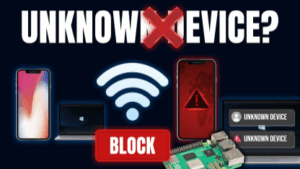Packet Tracer file (PT Version 7.1): https://bit.ly/2IvWY5y
Get the Packet Tracer course for only $10 by clicking here: https://goo.gl/vikgKN
Get my ICND1 and ICND2 courses for $10 here: https://goo.gl/XR1xm9 (you will get ICND2 as a free bonus when you buy the ICND1 course).
For lots more content, visit http://www.davidbombal.com – learn about GNS3, CCNA, Packet Tracer, Python, Ansible and much, much more.
#CCNA #PacketTracer #CCENT
The Routing Information Protocol (RIP) is one of the oldest distance-vector routing protocols which employ the hop count as a routing metric. RIP prevents routing loops by implementing a limit on the number of hops allowed in a path from source to destination. The largest number of hops allowed for RIP is 15, which limits the size of networks that RIP can support.
RIP implements the split horizon, route poisoning and holddown mechanisms to prevent incorrect routing information from being propagated.
In RIPv1 router broadcast updates with their routing table every 30 seconds. In the early deployments, routing tables were small enough that the traffic was not significant. As networks grew in size, however, it became evident there could be a massive traffic burst every 30 seconds, even if the routers had been initialized at random times.
In most networking environments, RIP is not the preferred choice for routing as its time to converge and scalability are poor compared to EIGRP, OSPF, or IS-IS. However, it is easy to configure, because RIP does not require any parameters unlike other protocols.
RIP uses the User Datagram Protocol (UDP) as its transport protocol, and is assigned the reserved port number 520
Based on the Bellman–Ford algorithm and the Ford–Fulkerson algorithm distant-vector routing protocols started to be implemented from 1969 onwards in data networks such as the ARPANET and CYCLADES. The predecessor of RIP was the Gateway Information Protocol (GWINFO) which was developed by Xerox in the mid-1970s to route its experimental network. As part of the Xerox Network Systems (XNS) protocol suite GWINFO transformed into the XNS Routing Information Protocol. This XNS RIP in turn became the basis for early routing protocols, such as Novell’s IPX RIP, AppleTalk’s Routing Table Maintenance Protocol (RTMP), and the IP RIP. The 1982 Berkley Software Distribution of the UNIX operating system implemented RIP in the routed daemon. The 4.2BSD release proved popular and became the basis for subsequent UNIX versions, which implemented RIP in the routed or gated daemon. Ultimately RIP had been extensively deployed before the standard written by Charles Hedrick was passed as RIPv1 in 1988.
ranscription:
So on router 1, as an example, we will need to create a DHCP pool to allocate IP addresses to hosts in the topology.
On PC 0 at the moment ipconfig
shows us that the PC doesn’t have an IP address allocated via DHCP. It’s using an autoconfiguration IP address or link local IP address. This PC will not be able to ping Cisco.com because this address is non-routable.
So back on router 1, ip dhcp pool
Let’s call this PCs network 10.1.1.0 with our mask / 24 mask, default router will be 10.1.1.1
That’s the local router, DNS server will be Google. Now what you may want to do is create an exclusion range before you create your pool to exclude a certain number of addresses so that we don’t have conflicts.
show ip dhcp binding
shows us IP addresses allocated. These PCs have already been allocated IP addresses 2, 3and 4 because I didn’t create the exclusion range first. So ipconfig shows us that this IP address has been allocated to the PC and hopefully it should be able to ping Cisco.com, which it can, and hopefully it should be able to ping Facebook.com, which it can.
So these devices here have been allocated IP addresses through DHCP and are able to ping devices on the Internet, and as an example, should be able to surf to Facebook.com, which they can, and to Cisco.com, which they can.
So that’s PC 2, here’s PC 0, can it get to Cisco.com? Yes it can.
Can it get to Facebook.com? Yes it can.
So site 1 is looking good. I’ll save that configuration. Let’s do something similar on router 2.
So ip dhcp excluded range 10.1.3.1 10.1.3.100
Notice the subnet. You could confirm that by looking at the IP addresses configured on the router or by looking at a show run and checking IP addresses and masks.
If you can’t do a show run, do a show ip interface
so show ip interface
that shows you the IP address and subnet mask to use.
So ip dhcp pool pc
network 10.1.3.0 with the subnet mask, default router will be the local router.
We can confirm that IP address again by using do show ip interface brief
There’s the local IP address, DNS server is Google.
So just to make sure that you saw the full configuration, there’s the exclusion range, there’s the DHCP pool….














